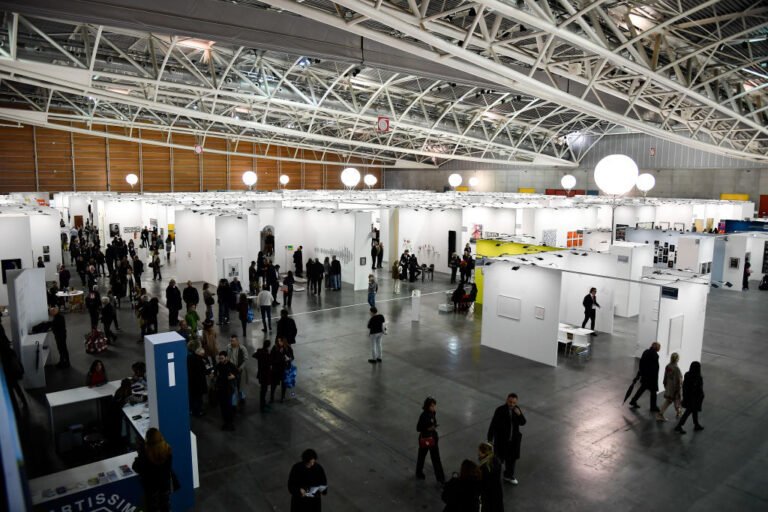Editor’s Note: This story originally appeared in On Balance, the ARTnews newsletter about the art market and beyond. Sign up here to receive it every Wednesday.
Eight years ago, art economist Magnus Resch collected a wide-ranging set of data from art galleries operating across the world. In the numbers, he showed a reality well known in the trade, that many of them were privately grappling with financial challenges as revenues stagnated and new buyers remained limited. Now, in a survey of interviews conducted with nearly 200 collectors and gallerists for his new book, How to Collect Art, Resch, a professor of art management at Yale, contends that the problem persists nearly a decade later.
“The art market has long faced a shortage of new buyers,” Resch told ARTnews in a recent interview. “Despite the global number of millionaires doubling in the last decade and record attendance at art events, the value of the art market has remained only stable. This discrepancy points to a conversion problem, wherein the newly affluent aren’t seamlessly transitioning into art buyers.”
How to Collect Art, which was released Wednesday, categorizes galleries that operate on the international stage based on four profitability types, taken from findings that Resch has previously published. More than half of the 20,000 galleries cited in the book operate in the biggest art centers of the United States, Germany, and the United Kingdom, but only a quarter of them achieve annual revenues exceeding $1 million. Financial challenges are especially pronounced for smaller galleries that pull in less than $1 million annually, as they often struggle to turn a profit. Resch says that landscape makes the role of an art patron an obligatory one. “Galleries heavily depend on a few collectors who make substantial purchases.”
At different points, the book acts like a recruitment manual, arguing that new buyers are needed to support a gallery system that is transactionally bound to a small group of people, leaving it vulnerable during economic downturns. In a number of interviews, Resch prompted museum trustees and gallerists—Pamela Joyner and Jeffrey Deitch, for example—to sound off on how people can transform a casual interest in art into a serious philanthropic endeavor without sacrificing their financial interests. Joyner explains that, over time, she developed some decision-making power to influence a “correction” of the canon after issues of equity became more pronounced for museums.
The book highlights the pivotal role that advice plays in this arena. Deitch, now in his 70s, attributes his long career to a wide network and a “perpetual curiosity about what’s new,” while top adviser Amy Cappellazzo urged departing from one’s “usual orbit.” The book delves into negotiations that artists and curators often make with the industry commerce, using MacArthur grant winner Tavares Strachan as a case. As a trustee at the Rhode Island School of Design, Strachan navigates the art world’s ambiguous directives with circumspection, saying, “the thing is, the industry is filled with people who are good at telling you what you should think and be interested in. No serious human should give up their own point of view to end up with art someone else told them to buy.”
Ahead of the book’s launch this week, ARTnews spoke with Resch on his findings and asked about new and recurring challenges impacting artists, collectors, and gallerists as they find themselves increasingly intertwined.
(This interview has been lightly edited for clarity and concision.)
ARTnews: In the book’s foreword, collector Pamela Joyner, a museum trustee in San Francisco, emphasizes the significance of being part of a class of serious collectors and the role of access to creative circles in supporting artists, museums, and gallery programs financially. Can you elaborate on the dynamics of this relationship, which seems to involve a mix of transactional and social elements, i.e., a desire to be in proximity to artists?
[Joyner] openly highlights the significance of connecting with curators, fellow collectors, artists, and friends throughout her collecting journey. This is a recurring theme among the 200 collectors I interviewed for this book: engage in conversations, immerse yourself in art, connect with artists—advice that numerous collectors wanted to impart to my readers.
The notion of ethical collecting is highlighted in the book, suggesting that it has become a more critical part of a cultural philanthropist’s mindset. The idea seems to align with trends seen in other industries, such as environmental, social, and governance investing and sustainable fashion. Can you discuss the significance of this moment and how it impacts the art market?
Most people purchase art for aesthetic and emotional reasons, often with a belief in its investment potential. However, art as an investment tends to be effective for only a select group of artists. So, why invest in art if you may never recoup your money? My response centers on what I term “responsible buying”—the concept that acquiring art isn’t merely a financial transaction, but also a philanthropic gesture. Rather than viewing it as an investment, I consider it a donation, acknowledging that I may not likely resell the piece. By making this purchase, I am supporting the artist, enabling them to continue creating art, thereby inspiring the broader artistic community. For me, it’s a way of doing good, with the added benefit of owning something I love and a story to share. This concept lies at the heart of my book: understand why you buy art and be informed how to buy. Prominent collections tend to bear out these findings. For example, singer Alicia Keys and her husband, Swizz Beatz, are active collectors. Their Dean Collection focuses on supporting primarily African American artists, including Kehinde Wiley [and] Mickalene Thomas.
There is a strong emphasis on the financial obligation of collectors to consistently support an artist’s practice year after year. What happens when this dynamic becomes strained, especially for small galleries that rely on a limited number of collectors for support? How does this affect emerging players in the art scene?
Galleries heavily depend on a few collectors who make substantial purchases. These collectors are shaping the market by driving demand and injecting funds into the cycle. Disruptions in this delicate balance can swiftly impact a gallery’s revenue, as observed in 2023 when buyers were hesitant. Smaller galleries, which cater to a significant number of first-time and new buyers, are the first to experience the impact. Their buyers, being relatively new to the program, are often the first to disengage. Larger galleries, with a smaller but more dedicated collector base, may endure initially. But if fewer collectors enter the cycle, even they will face challenges in the long run. That’s why my new book focuses on new buyers entering the market. It also represents the next logical step in my trilogy of books with Phaidon. After delving into the world of galleries in Management of Art Galleries and exploring the realm of artists in How to Become a Successful Artist, I felt the need to analyze and cater to collectors—the final significant player in the art ecosystem.
This is your third book in a series for the management of the arts. In Management of Art Galleries, you highlight that 30 percent of galleries operate in the red, with only 18 percent having a healthy profit margin of more than 20 percent. For smaller galleries, a substantial portion of sales, an estimated 45 percent, may come from a single leading artist. For those smaller programs, how critical is the funding of a few collectors to their long-term survival?
The connection between collectors and gallerists holds immense importance. Every major gallery is built on the support of a few significant collectors. And galleries play a significant role in the ecosystem by fostering artists’ careers and aiding collectors in navigating the art market. This relationship is only emphasized by a comprehensive data study where we analyzed 100,000 galleries and museums. The findings are unequivocal: Galleries are pivotal in driving the success of artists. Therefore, for collectors, forming and maintaining a relationship with a gallery is essential. However, not every gallery is the right fit for everyone.
If you purchase an independently reviewed product or service through a link on our website, ARTnews may receive an affiliate commission.


